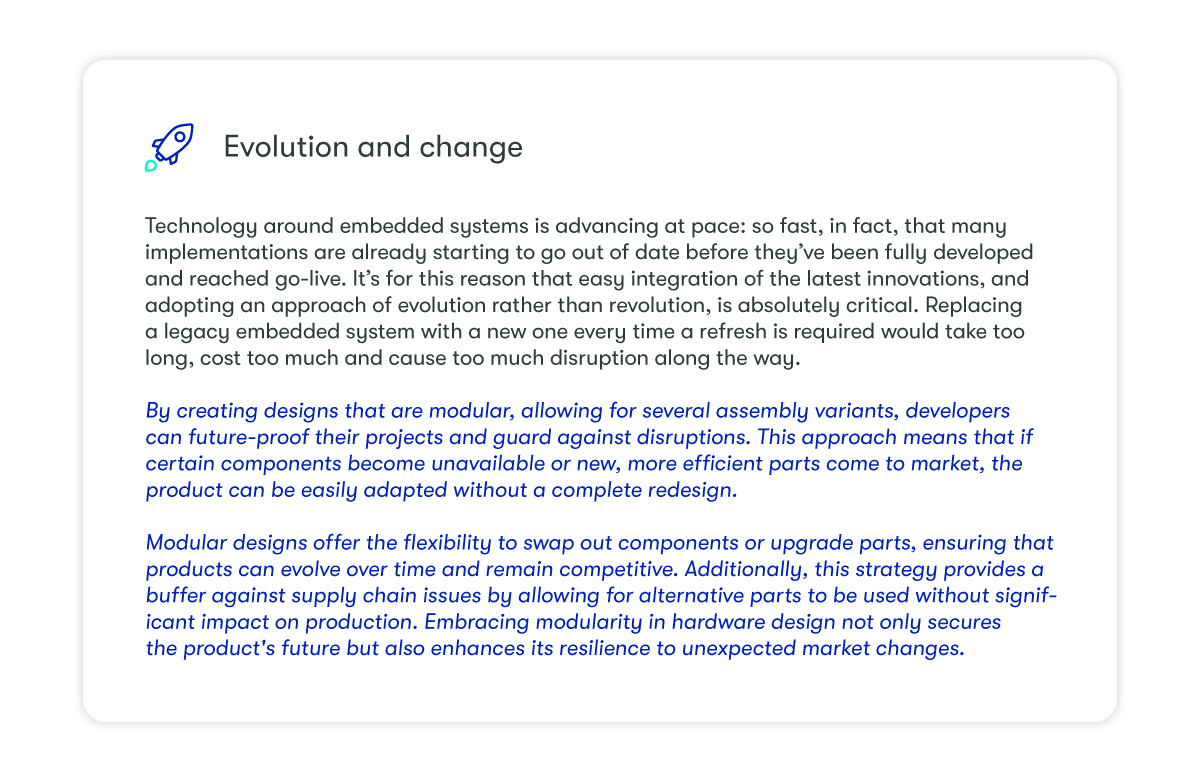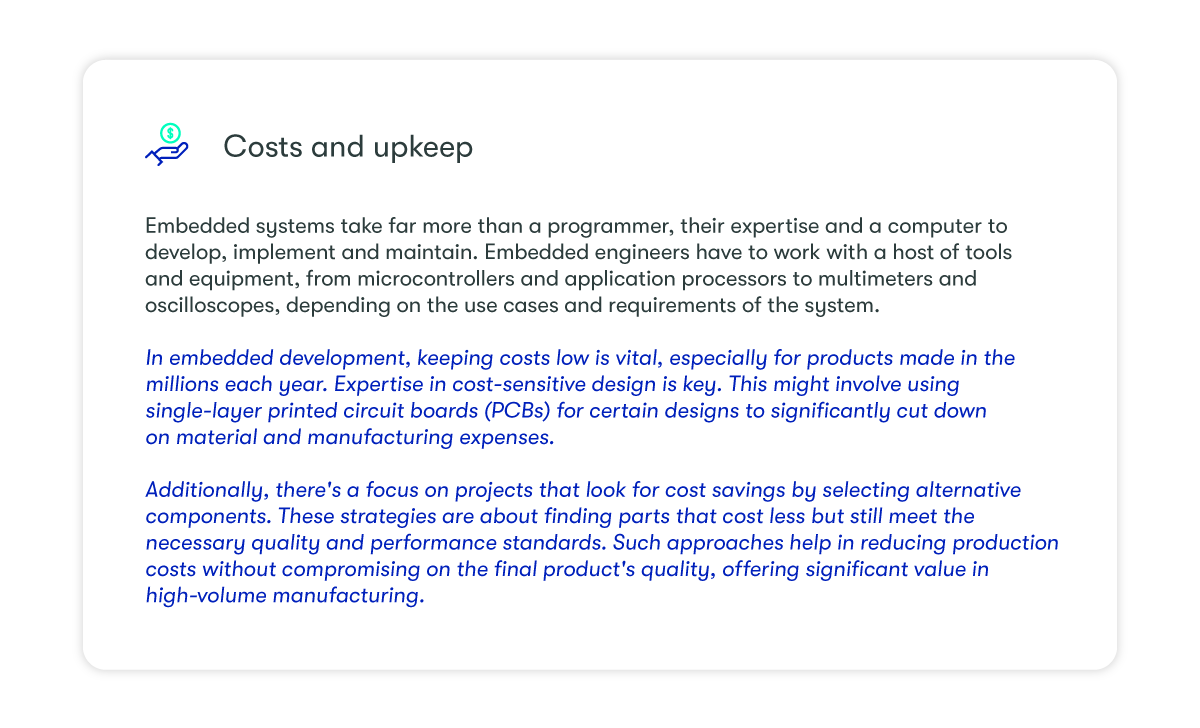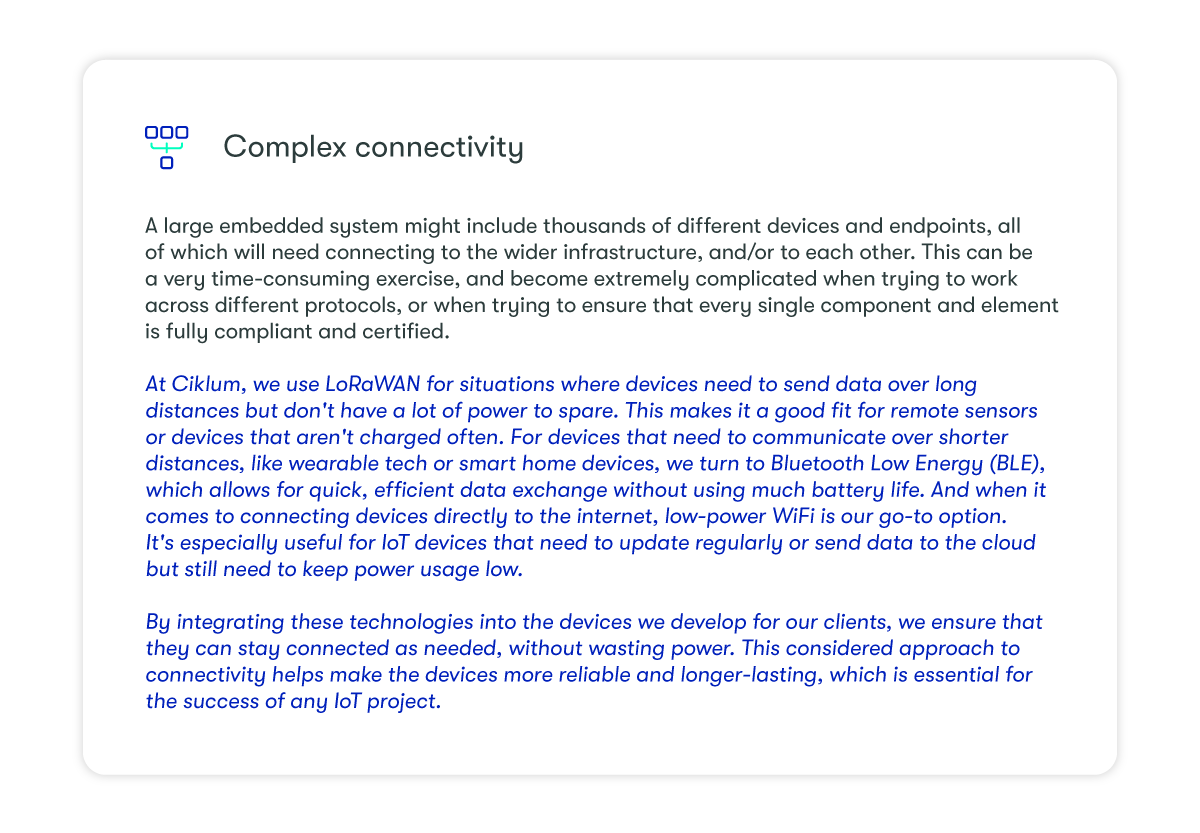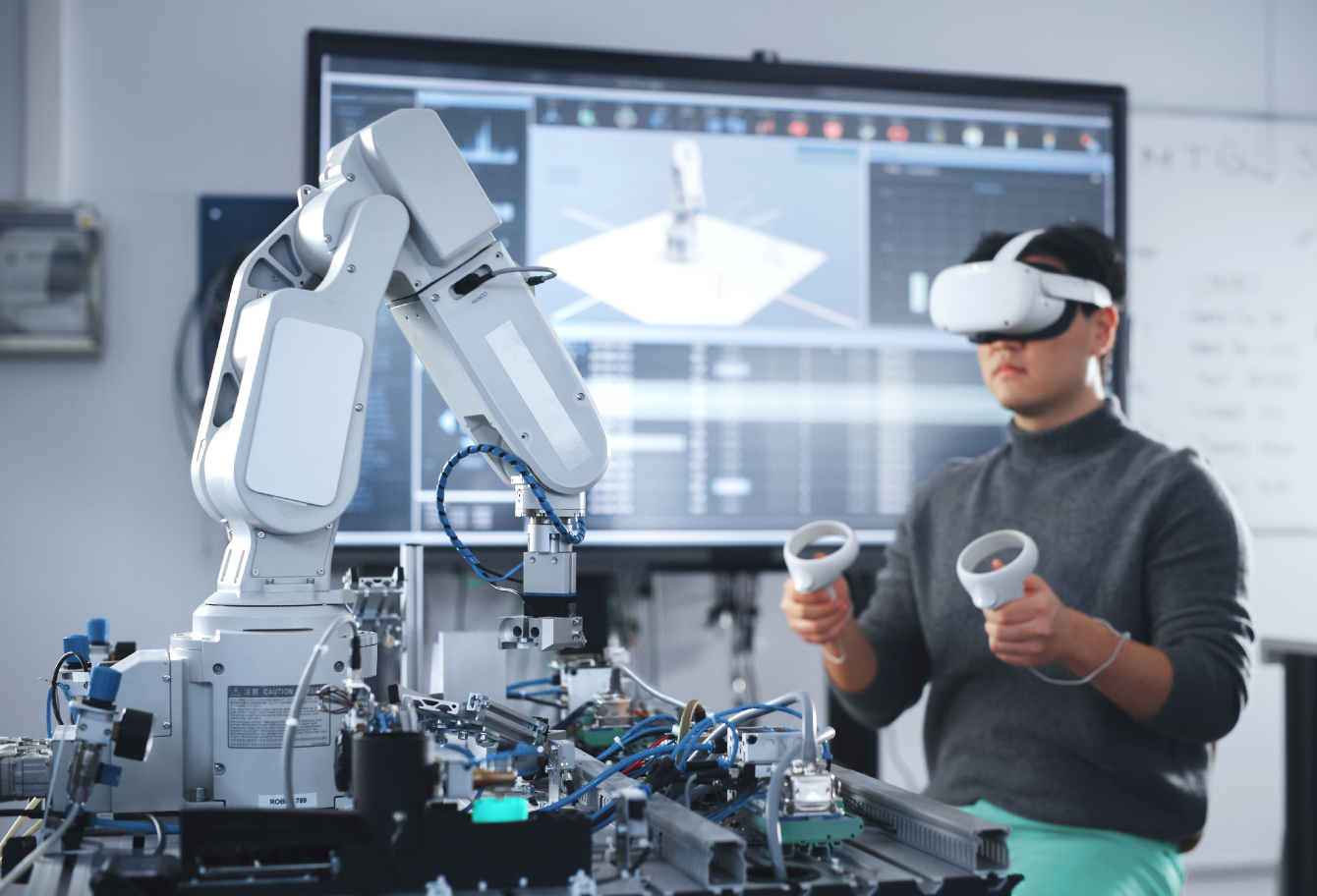Embedded systems have gained real traction in the business world in recent years, and it’s easy to understand why. The combination of hardware and software, programmable to serve specific functions within a wider network or infrastructure, is helping expand the capabilities of organizations around the world in far more efficient and cost-effective ways.
It wasn’t so long ago that the limit of most people’s imagination with embedded systems was a relatively simple Internet of Things (IoT) network. Devices at the edge of the network would collect data and feed it into the wider network for real-time processing and insights. But naturally, as with every other fast-developing area of technology, times are changing.
As the possibilities of embedded systems expand, the ecosystems involved get bigger, more complex, and therefore more difficult to manage. Indeed, for many organizations, things are getting to the point where embedded system development can be fraught with risk, and particularly vulnerable to disruption or delays.
Increasingly, it seems that only specialized domain expertise can guide businesses through what can be a rocky development journey.
The attraction of embedded technology
According to MarkWide Research, the global market for embedded systems is growing at 6.2% a year, and is expected to reach more than $140 billion by 2028. And one of the main reasons that embedded systems have grown in popularity so much is that they are so versatile and ubiquitous in how they can be used.
Take a moment to stop and look around you, and the chances are you’ll see embedded devices everywhere. The parking sensors on your car. The card reader you used to pay for your coffee this morning. The washing machine in your house that’s timed to come on while you’re at work. The camera on the smartphone that you’re probably reading this article on. All of these are embedded systems that have made advanced technologies everyday possibilities for all.

But the world - especially the technological world – doesn’t stand still. Who would have thought a decade or so ago that people would be paying for things with their watches, or would be using artificial intelligence to help them draft emails day-in, day-out? Keeping pace with the latest innovations and solutions has never been more important for businesses, so that they don’t fall behind, lose market share or fail to deliver on evolving customer expectations.
Ciklum is at the forefront of embedded technology innovation, and by integrating artificial intelligence (AI) into the products of our clients, we've significantly enhanced the user experience. The combination of embedded technology and AI enables devices to provide more intuitive feedback to users about how they're being used, making interactions both simpler and more informative. For instance, our AI-driven features can analyze usage patterns to offer personalized suggestions or adjustments, improving efficiency and user satisfaction.
And as embedded devices increase in their sophistication - and therefore their complexity - an increasing number of organizations are finding it impossible to keep up through in-house resources and expertise alone. Because of this, the role of third-party partnerships are proving to be instrumental in the most advanced implementations of embedded systems.
What are the challenges faced with embedded technology?
The challenges generated by embedded system complexity are many, and all of them have to be addressed in order to ensure that the benefits of the technology aren’t outweighed by disruption or loss of revenue. While the nature of the challenges in embedded system architecture design will vary from one business and industry to another, five of them stand out in more general terms:

Choosing the right experts
It’s clear that the best way forward with embedded systems is to work with an expert partner, one that has access to the latest tools, skills and technologies. It’s equally important that the partner is abreast of all the latest innovations in embedded systems, so that your deployment continues to stay relevant to your end-users, customers and business requirements.
In embedded development, our clients often ask us to quickly deliver physical prototypes, such as assembled PCBs, because they want to move from design to a real, working prototype fast. We understand how important this is for them to test their ideas and make improvements, so, we focus on making our process efficient and work closely with our partners to speed up prototype delivery. This helps our clients get their products ready for the market faster. For fast prototyping of mechanical designs, we also utilize 3D printing technology, which allows us to quickly turn digital models into physical prototypes.
Ciklum has a proven track record in end-to-end embedded systems development with businesses just like yours. We can add features and value into your ecosystem, provide tailored and iterative development processes in the context of your overall objectives, and support your existing in-house skill base wherever you need it, from proof-of-concept to prototyping. Whatever your approach to data and systems, and however far you’ve got in adopting new technologies like AI, we’re here to help.






































